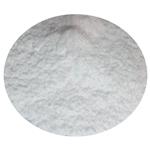Amyl alcohols (pentanols) have eight isomers.
All are flammable, colorless liquids, except the isomer 2,2-
dimethyl-1-propanol, which is a crystalline solid.
colorless waxy crystalline solid
- 2,2-Dimethyl-1-propanol can be used in the synthesis of surfactant that stabilize reduced graphene oxide (rGO) dispersion.
- Biodiesel containing branched-chain esters prepared by the transesterification of vegetable oils with 2,2-dimethyl-1-propanol has been reported to show lower crystallization temperature when compared to methyl and ethyl ester counterparts.
It is used in the Mitsunobu reaction of methyl salicylate coupling of sterically hindered substrates.
(n-isomer); Suspected reprotoxic hazard,
Primary irritant (w/o allergic reaction), (iso-, primary):
Possible risk of forming tumors, Primary irritant (w/o allergic
reaction), (sec-, active primary-, and other isomers)
Primary irritant (w/o allergic reaction). Used as a solvent in
organic synthesis and synthetic flavoring, pharmaceuticals,
corrosion inhibitors; making plastics and other chemicals;
as a flotation agent. The (n-isomer) is used in preparation
of oil additives, plasticizers, synthetic lubricants, and as a
solvent.
UN2811 Pentanols, Hazard Class: 3; Labels: 3-
Flammable liquid. UN1987 Alcohols, n.o.s., Hazard Class:
3; Labels: 3-Flammable liquid.
It is difficult to distil because it is a solid at ambient temperatures. Purify it by fractional crystallisation and sublimation. [Beilstein 1 IV 1690.]
Forms an explosive mixture with air.
Contact with strong oxidizers and hydrogen trisulfide may
cause fire and explosions. Incompatible with strong acids.
Violent reaction with alkaline earth metals forming hydrogen,
a flammable gas.
Dissolve or mix the material
with a combustible solvent and burn in a chemical incinerator
equipped with an afterburner and scrubber. All federal,
state, and local environmental regulations must be
observed.



